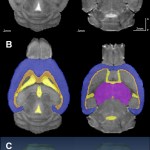brookhaven
The positive and sometimes unexpected impact of particle physics is well documented, from physicists inventing the World Wide Web to engineering the technology underlying life-saving magnetic resonance imaging (MRI) devices. But sometimes the raw power of huge experiments and scientific ambition draw the recognition of those seeking only the most extreme and impractical achievements on Earth.
Brookhaven National Laboratory’s Relativistic Heavy Ion Collider (RHIC) smashes particles together to recreate the incredible conditions that only existed at the dawn of time. The 2.4-mile…
No one credits heavy drinking with making people smarter - the mind-numbing effects are well documented. Odds are that if you haven't experienced this personally, you've witnessed it in the foolish antics of others. The clear correlation between rapidly diminishing intelligence and rising alcohol consumption is no secret.
But the long-term effects may go deeper than a morning headache or a need to wear sunglasses inside. A new study conducted at Brookhaven National Laboratory reveals that genetic factors can make some individuals more susceptible than others to lasting neurological damage…
This is the first in an occassional series about Brookhaven's Relativistic Heavy Ion Collider, or, as it's affectionately called, RHIC.
Lil John has a theme song for RHIC's latest experimental run.
Sorry, sorry! I couldn't resist. RHIC's actual ditty of the moment goes more like this. (Clean version, of course, RHIC doesn't want any soap in its linac).
RHIC, which has a maximum potential energy of 200 billion electron volts (GeV), collided gold ions at energies as low as 7.7 GeV this spring -- the lowest ever achieved in the machine. But why go so low?
Even at low energies, the gold-gold…
Despite their name, "high-temperature" superconductors require pretty darn cold conditions -- all far below freezing temperatures, some near absolute zero (-273 degrees Celsius) -- to operate without energy loss. As a result, they're not practical for everyday uses like more efficient power transmission -- that is, unless you have a stockpile of liquid helium or nitrogen dewars just hanging around your house.
So why can't we create room-temperature superconductors? That's a question that scientists are still trying to answer.
In research released today in the journal Nature, a team of U.S.…
Thanks to the smart nano detectives out there who took a stab at solving yesterday's picture puzzle.
Mystery image #1, aka the "Nano Vortex," shows the different magnetization directions of an arrangement of nickel and nickel oxide. Captured by Center for Functional Nanomaterials (CFN) scientist Yimei Zhu, this photo reveals the local distribution of electromagnetic potential. The ability to directly observe electromagnetic properties at the nanoscale may help scientists engineer new materials that rely on magnetic spin - rather than just electric charge - to control electric current. Such "…
Based on some of the (many) comments spurred by the appearance of PepsiCo on ScienceBlogs, we want to clarify Brookhaven's involvement on this site.
In April, Brookhaven was invited by ScienceBlogs editors to join the community as an institutional blogger, along with the Weizmann Institute of Science and the SETI Institute (and later, CERN and the Howard Hughes Medical Institute).
There's no money being exchanged between Brookhaven and ScienceBlogs.
Of course, we see this as a good public relations opportunity. But that doesn't mean that this space will only be used to redistribute press…
If you're American, chances are you'll be looking up this weekend for a spectacle of physics. But you also can look down from above -- way, way above -- to see the homes of some of the greatest physics experiments on Earth.
Brookhaven's Relativistic Heavy Ion Collider (RHIC) is probably one of the most visible particle accelerators from space.
Check out this satellite shot from 1982, when construction was underway for RHIC's predecessor, ISABELLE:
And this more recent aerial shot, taken in May:
RHIC is the first machine in the world capable of colliding heavy ions, which are atoms that…
A little more than one year ago, on the day of its groundbreaking ceremony, the National Synchrotron Light Source II (NSLS-II) construction site was nothing more than a whole lot of dirt. Today, it's...well, take a look for yourself.
The NSLS-II construction site on the day of the groundbreaking ceremony, June 15, 2009, and...
...exactly one year later
Construction is quickly progressing on the $912 million facility, which will be the world's most brilliant light source. Eh, what's a "light source?" Basically, it's a particle accelerator that, in a controlled manner, sheds light of…
Where can scientists collide gold ions at close to the speed of light; take photos of some of the smallest materials known to humans; decipher the structure of proteins vital to everyday life; illuminate the brains of drug and food addicts; and test materials developed for fuel cells and other clean energy technologies - all on one campus?
These things happen every day at Brookhaven National Laboratory, a (very) multidisciplinary, government-funded institution located on Long Island, about 60 miles east of New York City.
Every year, more than 5,000 researchers from around the world join the…

